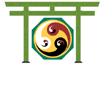
A Book of Little Traditions

|
minzoku NEO-shintô A Book of Little Traditions |
|
|
ToC |
||
|
Characteristics of shintô – 08 / 28 / 2012
Characteristics that identifiy shintô bearing in mind that, from the viewpoint of a practitioner of minzoku NEO-shintô, these are normative, not definitive.
Praxis – the practices of the commons; the people who actually transmit a traditional folkway to the next generation
The Five Criteria of Folklore – What are the identifing traits that makes something a part of folklore?
What shintô Doesn't Have – shintô doesn't have many of the things that Westerners normally associate with the idea of religion
Influences on shintô – The sources of ideas that came from outside the Japanese culture, but that were subsequently incorporated into the body of shintô folklore
Religious Norms Within shintô – Ideas that are central to the practices of the various forms of shintô
shintô Virtues – Ways of behavior that are encouraged within shintô
shintô and Sin – The attitude of shintô practitioners towards what is called sin in the Western religions
shintô and Sex – The attitude of shintô practitioners towards sexuality
|
||
|
|